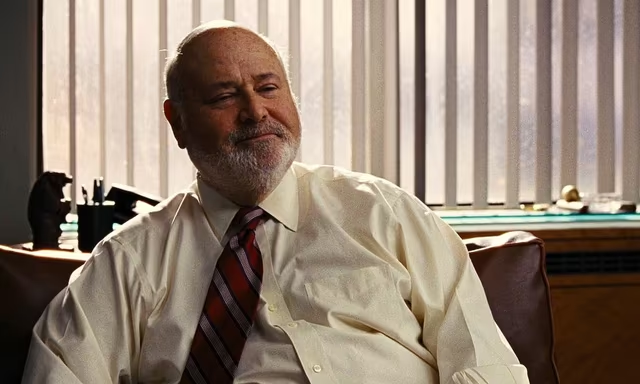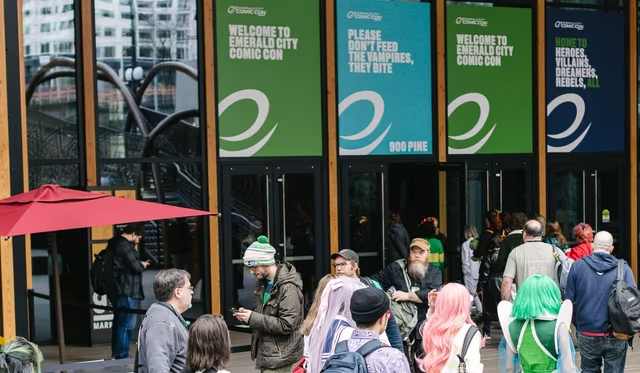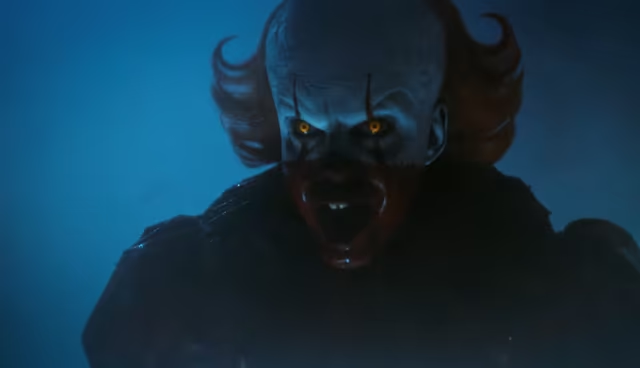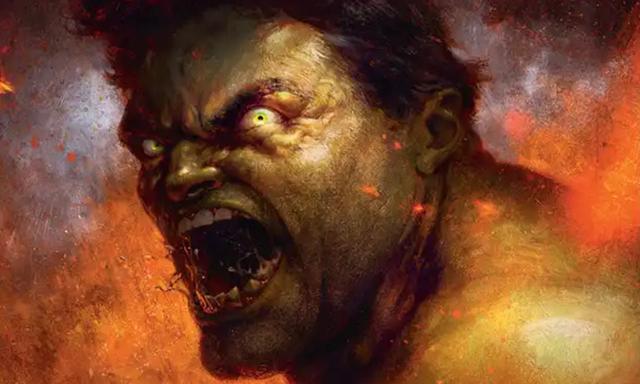If you click on a link and make a purchase we may receive a small commission. Read our editorial policy.
Comic artist Simon Roy returns to his webcomic roots with Griz Grobus
A holy robot, a war god goose, and their comic that hit its Kickstarter goal in under a day.

Simon Roy is an artist who’s always thinking about the future. Roy is best known for his acclaimed 2012 relaunch with Brandon Graham of Rob Liefeld’s Prophet, in which he launched the World War II hero trapped in the modern day still 10,000 years further into the future. In Roy's comic Habitat, his story visit a utopian space colony long after its golden age, its once lofty and noble goals abandoned for wild cannibalism. And in his own career, Roy has managed to survive in a turbulent comic industry bas asking the same question of himself: 'What comes next?'
Roy’s latest project, Griz Grobus, is his first comic on the Webtoon platform. It’s a story- well, two stories, really- about a young academic and the harvesting robot she discovers with the digitized mind of an ancient missionary priest, and another story of an ancient civilization performing an interrupted ritual which incarnates their war god in the body of a common goose. How these stories come together is just now starting to take shape (we have some theories of our own), and it’s one you’ll soon be able to read for yourself online and in print thanks to an immensely successful Kickstarter campaign. As the Griz Grobus campaign enters its final days, we got the opportunity to speak with Simon Roy about his journey to Webtoon and Kickstarter, his thoughts on religion and legacy, and maybe an idea of what that goose is all about.
Popverse: You've been working with Image, Dark Horse, and other print comic publishers for 10 years, but you began your comic book career in webcomics. Now, you've launched Griz Grobus as your first Webtoon. How has the webcomic space changed since the 2000s?
Well, my webcomic career was always very informal – posting stuff on Flickr and deviantart, mostly. But I always pursued validation through the traditional retail market first. The internet was more a place for me to test out ideas and explore all sorts of obsessive worldbuilding projects (like the parallel universe of intelligent dinosaurs I spent many years building with the Turkish artist CM Kosemen).

On one hand, it feels like we comics are experiencing some of the same things the rest of the internet has - a world of infinite websites collapsing into a handful of dominant monopolistic ‘platforms.’ But nearly all of the webcartoonists I was following a decade ago are still running their own stories on their own websites. Currently, I tend to think that the best approach for artists would be to serialize their comics on any and all platforms they can (as long as they can retain the rights and editorial control, ideally).
Griz Grobus is a revisitation of Habitat, a story published in Image Comics' Island anthology in 2016. It's the story of a once utopian future society revisited in catastrophic collapse. Griz Grobus, too, opens on a town which seems to have strayed far from its initial vision, having formed a new mythology from scattered pieces of the past. What made you want to revisit these themes?
They are themes that keep drawing me back. Habitat was the more gonzo version of this - a collapsed utopia providing the seeds for a cannibal tyranny. But Griz Grobus was a chance to take a more hopeful look at the scenario - people continuing to live and thrive, despite unknown historical tumult and trauma that severed them from their utopian roots.
Also if you read First Knife, which I co-wrote with my friend Daniel Bensen, we were caught in many of the same themes there too. There's something about cantankerous mechanical beings, emerging from the lost past into new worlds, that just fits too nicely into my brain to ever leave alone. First Knife also gave us the opportunity to explore the potential malleability of religion over eons...
One of the most interesting things about Griz Grobus is how it intertwines this science fiction story of academia and historical discovery with a mythological comedy of a war god who physically manifests in the body of a goose. What are you telling us by linking these stories?
The two began completely unconnected, when I was writing them with Jess Pollard. I can't remember exactly how the two stories began to merge, but they seemed to fit together quite naturally. I think we were both just into the idea of the 'Story within the story,' and let the two interact as much (or as little) as we wrote it up.

One guess I can make is a religious theme of a god and a priest who must interact with the world in a body not their own, whether that's a goose or a crop-tending robot. Is this a story about religion? Or body dysmorphia? What are your personal experiences with those?
This story is more about religion, I think. Father Stanley, the robot-priest that sets off the whole book, serves in particular as a sort of rumination on old, ossified religious structures, and how they find themselves able - or unable - to adapt to new, materialist circumstances like our own. How does a two thousand year old religious-bureaucratic structure survive in an atomized, post-industrial world?
Conversely, the story of the War God trapped in the world of men ends up covering a lot of that same territory - the concessions made by servants of religion, and the concessions made by the religion itself as it faces contact with the ever-changing world.
That being said, characters being alienated from their own bodies is an ever-present theme in the book - so body dysmorphia isn't ever far away.
Maybe the strongest theme to me of Griz Grobus, and in a way Habitat before it, is the idea of legacy, and how we have no control over how our actions and intentions will ultimately be interpreted, or what their effect will even be, once we put them out into the world. How much of yourself do you see in characters like Father Stanley?
I see a great deal of myself in Father Stanley - good intentions can't save annoying acts. The idea of a wider legacy is inherently VERY unrealistic, unless you're a despot or a saint. For the rest of us - especially us egotistical and ephemeral artistic types, who get all caught up in our internal worlds and fantasies of grandeur - we can really only hope for a bit of attention while we're still alive.
You've launched a Kickstarter for a physical edition of Griz Grobus. We're in the final week, but it already met its initial goal in less than a day and has blown past your stretch goals. How did that happen?

I credit a combination of CONSTANT ONLINE POSTING, alongside more traditional methods of audience-building. Griz Grobus, in a serialized form, first began appearing on my Patreon back in 2017, and the first two chapters began circulating as their own physical minicomics (at conventions and online) not long afterwards.
Last year, Damon Gentry and I ran our first Kickstarter for Grip of the Kombinat - another collection of stories, originally serialized on patreon- and through the experience of promoting and coordinating that campaign with Damon, knowledge was gained and fan relationships were strengthened.
The book was finally colored and completed last year, but it wasn't until this past March that I began posting pages online. The process of re-serializing the book on Webtoons gave me a great excuse to be constantly shouting online about it, and a great platform on which to build up both an audience for the book AND 'buzz' about the crowdfunding campaign, when it was time to do all that.
Still, I was very pleasantly surprised by how well the campaign has gone over so far. It still boggles my mind that with a fraction of the audience you'd need in the direct market, you can fund the printing of a book with room for a bit of profit afterwards!
Knowing Griz Grobus has this much enthusiasm and support, do you have any ideas for where you'd like to go next? Is it something in this milieu, or something new entirely?
I already have several more finished stories set in this universe (including one adapted from my script by the great artist Linnea Sterte), and several more planned, so my hope is to assemble a book of short stories in the next year or so. Something akin to my first Image book, Jan's Atomic Heart and Other stories, only with most of the tales anchored deep in the universe of Griz Grobus.
You can read weekly chapters of Griz Grobus on Webtoon free, and become a backer of the print edition on Kickstarter today. Make sure to check out the book trailer below:
Avery Hill's Spring 2023 Kickstarter campaign is live, featuring comics by Nicole Goux, K. Briggs, and Ellice Weaver
Follow Popverse for upcoming event coverage and news
Find out how we conduct our review by reading our review policy
Let Popverse be your tour guide through the wilderness of pop culture
Sign in and let us help you find your new favorite thing.
















Comments
Want to join the discussion? Please activate your account first.
Visit Reedpop ID if you need to resend the confirmation email.